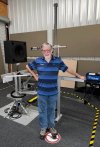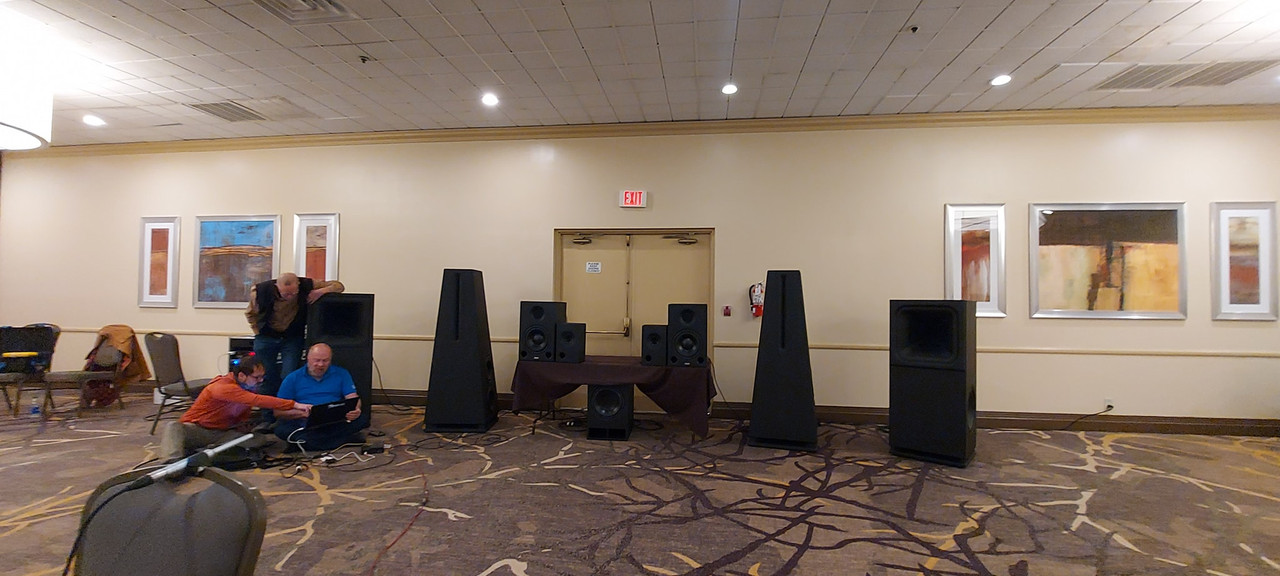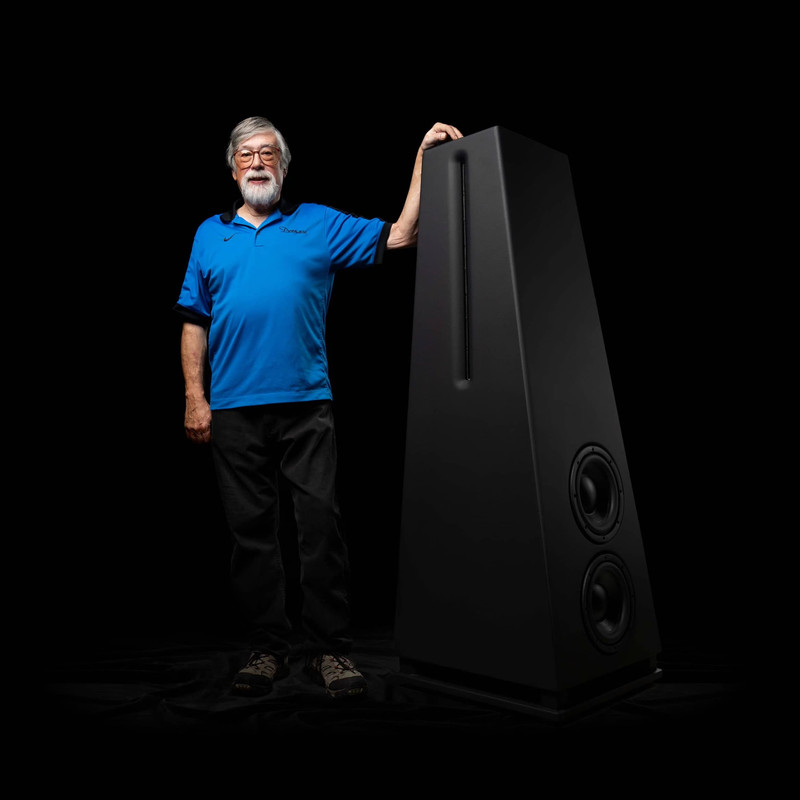-
Welcome to ASR. There are many reviews of audio hardware and expert members to help answer your questions. Click here to have your audio equipment measured for free!
You are using an out of date browser. It may not display this or other websites correctly.
You should upgrade or use an alternative browser.
You should upgrade or use an alternative browser.
Tom Danley’s new ‘Hyperion’
- Thread starter Purité Audio
- Start date
- Thread Starter
- #102
Did you have someone specific in mind?
They are the ultimate expression of form following function.
Keith
They are the ultimate expression of form following function.
Keith
K_Media Engineering
Member
- Joined
- Jul 13, 2022
- Messages
- 9
- Likes
- 24
If anybody is interested in experiencing the Danley HRE (ex-Hyperion) latest prototype, there is a pair in Budapest and it will be shown in one of the high-end audio dealers showroom in the next 2-3 weeks.

- Thread Starter
- #104
They look very familiar.
Keith
Keith
K_Media Engineering
Member
- Joined
- Jul 13, 2022
- Messages
- 9
- Likes
- 24
You think so?They look very familiar.
Keith
K_Media Engineering
Member
- Joined
- Jul 13, 2022
- Messages
- 9
- Likes
- 24
We were using them for the introduction event of our My Reel Club series Gábor Juhász Trio, featuring Julia Karosi and Tony Lakatos: Planets album. It is a live studio recording in DXD/DSD, high speed tape, Atmos and CD.

K_Media Engineering
Member
- Joined
- Jul 13, 2022
- Messages
- 9
- Likes
- 24
We have done a few measurements in the given room. This is one of them.If anybody is interested in experiencing the Danley HRE (ex-Hyperion) latest prototype, there is a pair in Budapest and it will be shown in one of the high-end audio dealers showroom in the next 2-3 weeks.
View attachment 218145
K_Media Engineering
Member
- Joined
- Jul 13, 2022
- Messages
- 9
- Likes
- 24
There is a chance that I will share few other diagrams as well, we will see.Looks good.
Curious to see how this compares to the JBL M2 which is what it makes me think of.
That speaker seems extremely loud and quite accurate. Curious if this is louder, more accurate, more extended, or all three.
That speaker seems extremely loud and quite accurate. Curious if this is louder, more accurate, more extended, or all three.
Vacceo
Major Contributor
- Joined
- Mar 9, 2022
- Messages
- 3,245
- Likes
- 3,506
K_Media Engineering
Member
- Joined
- Jul 13, 2022
- Messages
- 9
- Likes
- 24
I had a brief, few hours long experience with the M2 with Crown amps. So I can not compare them, honestly.Curious to see how this compares to the JBL M2 which is what it makes me think of.
That speaker seems extremely loud and quite accurate. Curious if this is louder, more accurate, more extended, or all three.
Subjectively the HRE has a kind of limitless dynamics feeling, a liveliness, and scale which is practically unmatched by any of the speakers (and amplification) I was living with (Focal Grand Utopia, Avantgarde Acoustics Trio, Naim DBL, etc.).
It needs room; I would suggest letting at least 3 - 4 m between the two speakers and at least a meter between the side wall and the speaker. 35-40 sqm room is practically the minimum to get its sound right, and you need to sit at least 4-5 m from them.
Using this way, the speaker completely disappears from the room.
It has a 60x60 dispersion, so it can focus the energy on the listener.
It is quite surprising how well its four ways are integrated; it is like a huge single-point source but moves lots of air.
It goes down to 20 Hz and possibly lower and can provide quite a bit of volume between 20-40 Hz, so it puts the floor below the instruments and musicians.
It's a unity horn so certainly sensitivity is even higher than M2, also hyperion has dedicated subwoofers while M2 doesn't actually go that low as may be expected from 15 inch driver since it's more optimized as a woofer.Curious to see how this compares to the JBL M2 which is what it makes me think of.
That speaker seems extremely loud and quite accurate. Curious if this is louder, more accurate, more extended, or all three.
pseudoid
Master Contributor
Definitely lacks any forethought for W.A.F. but may not really be meant for consumer installations.Wow, sanded AND lacquered marine ply, complete with putty over the staple holes! That 'foldback style' speaker looks hideously amatuerish, let's be honest.
@Purité Audio had posted the Cessaro speakers (at the Munich Show), in an earlier post.
Danley's HRE (Ex-Hyperion) speaker here:
IMO >> Both look like his-n-hers bathroom sinks!
EDIT: February 2022 new thread "Competition for Danley’s Hyperion" is here.
Matthias McCready
Active Member
- Joined
- Jul 2, 2021
- Messages
- 219
- Likes
- 286
What is the sub under the table?
Patrick Bateman
Member
- Joined
- Mar 31, 2020
- Messages
- 49
- Likes
- 104
Danley CS-30:
 www.diyaudio.com
www.diyaudio.com
Featherweight Title Fight
Can anyone figure out what's going on in the Danley CS-30? I can't figure out how they're getting a bandpass-ish response curve along with an impedance curve that almost looks like a sealed box. Based on some comments from Ivan Beaver, it looks like the CS-30 complements the TH-Mini well, so I...
Patrick Bateman
Member
- Joined
- Mar 31, 2020
- Messages
- 49
- Likes
- 104
Curious to see how this compares to the JBL M2 which is what it makes me think of.
That speaker seems extremely loud and quite accurate. Curious if this is louder, more accurate, more extended, or all three.
erin's audio corner has measured and reviewed the JBL M2 and the Danley Synergy Horn
As I understand it, part of "the Hyperion Magic" is the use of DSP to optimize the frequency and phase response to the Nth degree.
Due to the fact that Synergy and Unity horns are point source speakers with a lot of headroom, they're very friendly to equalization of frequency and phase response.
A conventional speaker isn't friendly to EQ because a conventional speaker (generally) doesn't have unlimited headroom, and if you EQ it at one point in the room it might make things worse in a different point. Anyone who does car audio has run into this, where the system can sound really great for the driver while sounding poor for the passenger.
A point source like the Kef speakers isn't amenable to a lot of EQ because they don't have a lot of headroom. If you add 3-6dB of EQ to a Kef speaker, you might end up reducing the maximum output by 25-50%
Looks like a Cabasse reminiscence...
Last edited:
Too much BLACK!!!!What is the sub under the table?
Looks like fun.
Similar threads
- Replies
- 0
- Views
- 423
- Replies
- 28
- Views
- 3K
- Replies
- 32
- Views
- 4K



